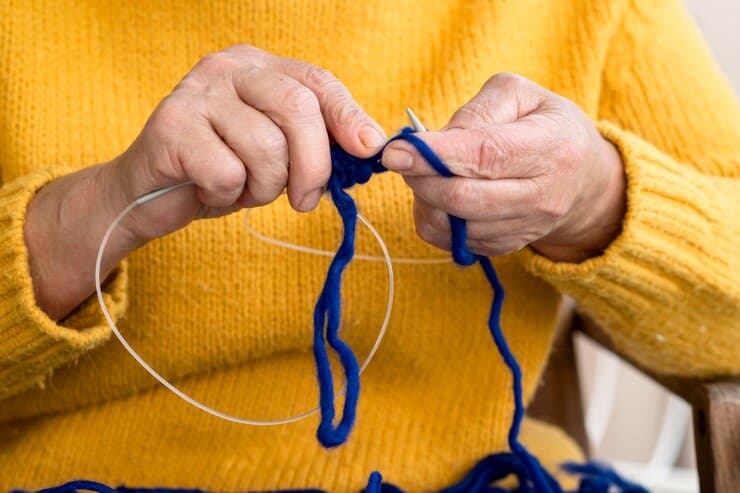Magic Loop Knitting: Mastering Small Circumferences
Are double-pointed needles proving to be a stumbling block for your tubular knitting project? Fear not! Let’s explore the enchanting realm of Magic Loop Knitting, a technique introduced by Sarah Hauschka in 2002.
This comprehensive guide takes you through the step-by-step process, troubleshoots common issues, and provides insights into when to seamlessly incorporate this method.
Demystifying Magic Loop Knitting
Magic Loop Knitting stands as a groundbreaking technique tailored for conquering small-diameter projects using regular circular needles. By ingeniously dividing the project, this method opens the door to crafting seamless rounds, making it particularly well-suited for socks and similar patterns. Imagine splitting your project into two parts, with one comfortably nestled on the flexible cable.
Essential Materials for Your Magic Loop Journey
To embark on this magical knitting adventure, equip yourself with circular needles boasting an extended, flexible cable (preferably 32″ or 40″). The length of the needle tips is a matter of personal preference. This versatile technique caters to various tubular projects, excluding those with extremely small diameters.
Materials:
- Yarn of your choosing (e.g., Schachenmayr Catania Grande);
- Circular needles with a lengthy cable (e.g., Knitter’s Pride Nova Platina).
A Step-by-Step Guide to Mastering Magic Loop Knitting
- Casting On: Commence your project by casting on the required stitches, adding an extra stitch for a seamless join. For instance, if your pattern calls for 20 stitches, cast on 21;
- Creating the Loop: Fold the cable at the center of the cast-on edge, extracting a loop through the middle and evenly distributing stitches on either side;
- Starting the Magic Loop Technique: Slide stitches to the needle tips without any twists. Slip the initial stitch to the back needle, executing a 180-degree turn, and smoothly pass the second stitch over;
- Working Across the Stitches: Continue knitting across the first needle, maintaining tension between the last and first stitches. Once completed, retract the free needle, gathering all stitches;
- Turning the Work: Rotate the needles by 180 degrees, extract the front needle, and slide stitches to the middle of the cable;
- Continuing the Process: Reiterate steps 3.3 to 3.5 for subsequent sections, ensuring a seamless transition between needles.
Explore the step-by-step process of knitting buttonholes with our guide, How to Knit Buttonholes: A Beginner’s Journey.
Troubleshooting the Art of Magic Loop Knitting: Gap Management
Prevent unsightly ladders by keeping stitches close while knitting the first stitch on a new needle, paying close attention to transition points.
Maintaining Even Tension
Beware of uneven tension caused by pulling too tight or utilizing the wrong cable size. Opt for a cable length that minimizes stress on joins.
Cable Considerations
Select a sufficiently flexible and untwisted cable to avoid stretching the gap and creating loose strands.
Stitch Placement
Steer clear of intricate stitches at the beginning or end of needles to prevent undue stress on adjacent stitches.
Purl Stitches and Their Impact
Minimize the use of purl stitches around gaps to ensure a balanced yarn distribution.
Utilizing Different Needle Sizes
Consider using a slightly smaller needle on one end to facilitate smoother stitch movements and prevent excess stress on stitches.
Strategic Choices: When to Opt for Magic Loop Knitting
Evaluate whether Magic Loop Knitting aligns with your project based on its circumference. For larger projects like sweaters or cowls, circular needles of similar length may suffice. However, when dealing with smaller diameters, Magic Loop presents a seamless alternative.
Project-Specific Challenges
Certain projects may pose unique challenges, especially if the pattern involves a significant number of stitches extending beyond the needle tips. Prioritize checking for twists before embarking on the knitting process.
Transitioning from Flat to Round Knitting
For those finding the cast-on process daunting, particularly with a large number of stitches, consider knitting flat for 3-5 rows before seamlessly transitioning to the round. Subsequently, employ techniques like mattress stitch to close the gap.
Conclusion
Magic Loop Knitting provides a versatile and efficient approach to crafting seamless tubular projects. By adhering to our detailed guide, you’ve gained insights into the step-by-step process, troubleshooting common issues, and strategic decision-making for incorporating this technique.
As you embark on your magic loop journey, experiment with different projects, yarns, and needle sizes to tailor the method to your preferences. With a bit of practice, you’ll seamlessly navigate the circular realm of knitting with confidence.
